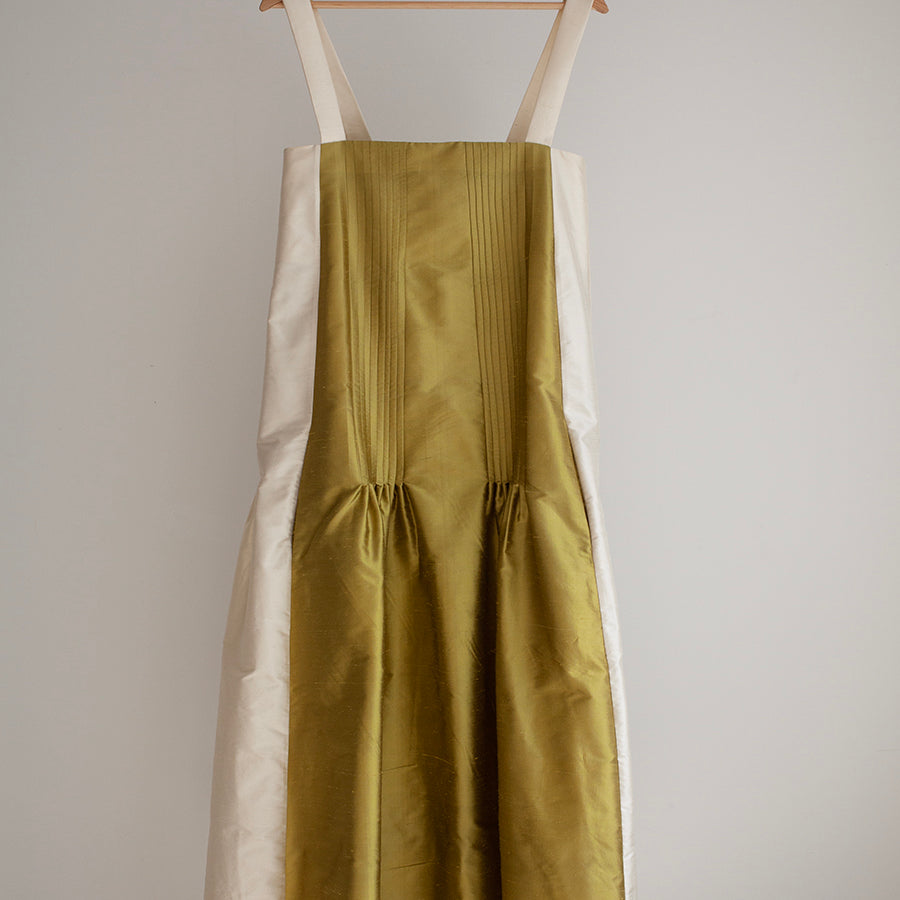






I always like to think of sewing a shirt as completing a series of stages. It’s a nice idea to break down the sewing process if you feel a bit overwhelmed at the amount to sew.
I always start with the front panels and sew the button stands and then add the pockets. Next I sew the back and yokes together and then join the shoulder seams and side seams. Once this is done I approach the sleeves and the collar as 2 separate tasks. And after that it’s just the buttons and the hems to complete.

Tips
...for a smooth and professional make.
It's really nice to aim for a high quality of finish with something as wearable as an Over Shirt. It's likely to be in your wardrobe for many years so it's a great chance to push your finishing skills as far as possible. Here are a few extra tips to achieve that extra special quality of finish:
Think in millimetres and not centimetres. Shirt making is a precise process and it helps to really zoom in and think in small increments.
-
Cut out your pattern pieces as neatly as possible and carefully snip every single notch as you go. This will ensure your seam allowances are accurately marked which gives you neater guidelines to work with.
-
When it comes to sewing, focus on getting your stitch lines nice and straight using the seam allowance notches as mentioned above.
-
Trim back the inner seam allowances where bulky areas meet such as where the plackets join the cuff and where the collar stand joins the button stand. This will help those areas to sit much flatter, giving it a neater finish.

Use the iron generously. Take your time and apply plenty of steam and weight. If you set yourself the task of spending twice as long pressing your garment throughout the process you'll have a garment that is twice as crisp when you finish.
-
Always, ALWAYS pre-wash your fabric.
-
Check the sleeve length before you cut your fabric out. You don't want to sew a whole placket and cuff to realise that the sleeve is too long or short.
-
Length is very easy to add to this garment as it is a square cut. You can use a ruler to chalk the extra length directly on to your fabric before you cut it out.
-
You can pre-fuse all of your pieces for a smooth sewing process.

Your Makes
(and some hack ideas).

1. By the Book
To kick off here are a couple of lovely makes that are by the book with no hacks or changes.
Above made by @knitxxor
Below made by @adinskausminsk


2. Go Full Utility
Above & below made by @beccalgood


3. Colour Blocking
The Over Shirt pattern has quite a few pattern pieces which makes it a great piece to play around with block colouring.
The piece above is made of scraps of fabric left over from other projects which is such a great way to save on waste and create a piece of clothing for free.
Above made by @the.hero.of.this.story
Below made by @handverkshverdag


4. Upcycling Magic
I'm a bit obsessed with both of these makes and I immediately need to go tablecloth shopping. The make below opted to turn the sleeve pleats into gathers and they also left the pockets off. Both of these design decisions means the beauty of the fabric isn't interupted.
Above made by @zuzstories
Below made by @flippingcurtains

5. Rain Ready
Another option for a more substantial 'jacket' feel is to use a waxed cotton and add a lining.
When sewing with waxed cotton you should use the iron sparingly so it's a good idea to loose the placket and cuff like this one has. To make up for the minimal ironing you can use additional topstitching to get a more crisp finish.
Made by @heritageninja


6. Short Sleeved Sass
And last but not least here is a very lovely short sleeved version, the perfect piece for summer!
Made by @heritageninja






